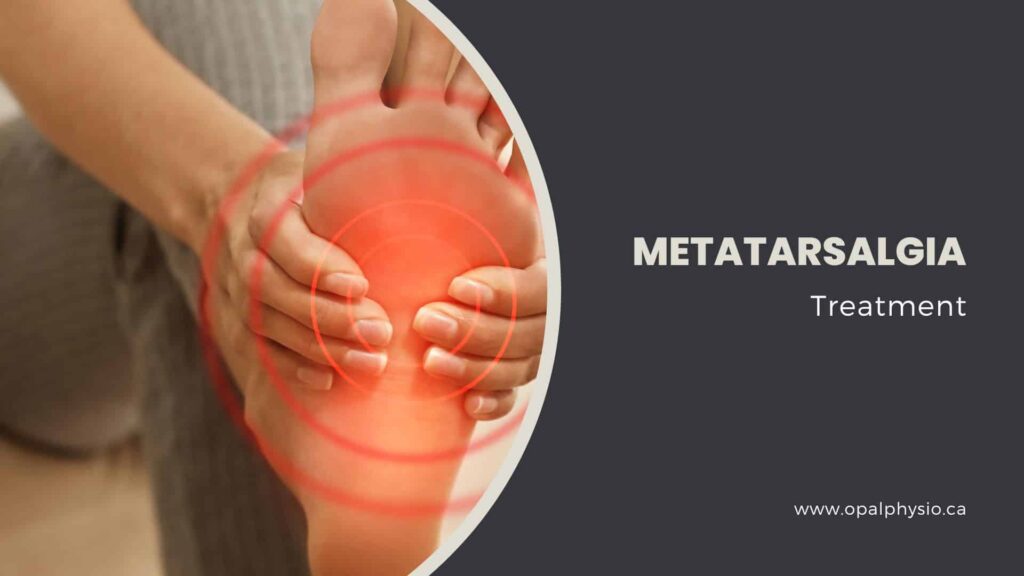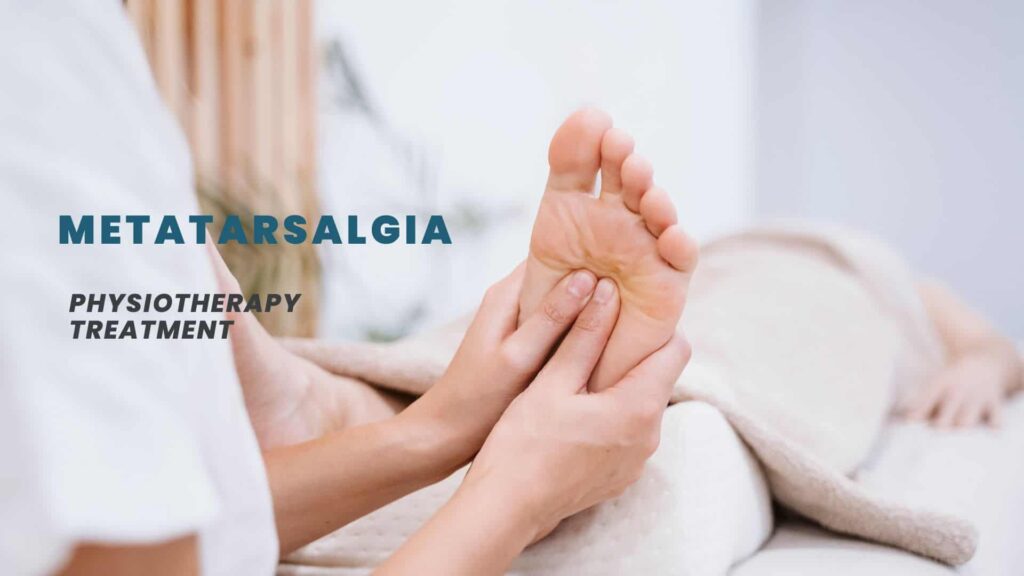Metatarsalgia Physiotherapy Treatment for Foot Pain
Metatarsalgia, a common overuse injury, is characterized by pain and inflammation in the ball of your foot, often associated with high-impact activities like running and jumping. This discomfort can sideline you from your favourite activities, but with the right approach, you can manage the symptoms and get back on your feet.
Physiotherapy can help to improve foot mechanics and reduce stress on the painful areas of your foot. It can also help strengthen the muscles and ligaments around the affected joint, relieving pain.
At Opal Physiotherapy, Langley, we offer treatments that can help relieve your metatarsalgia pain and get you back on your feet.

What is metatarsalgia?
Metatarsalgia is distinguished by pain and inflammation in the base of the toes, specifically around the metatarsal bones. These are the long bones between the arch of the foot and the toes.
It is often associated with overuse or excessive pressure on the forefoot, leading to discomfort and pain during weight-bearing activities.
While there is no cure for metatarsalgia, there are treatments that can help relieve the pain and improve your quality of life.
Early intervention and appropriate management can help alleviate symptoms and prevent long-term complications.
Causes of metatarsalgia
Metatarsalgia can be triggered by a variety of factors, which may include:
Symptoms of metatarsalgia
Risk factors for metatarsalgia
Almost anyone can develop this condition, but certain factors increase your risk. These include
Foot structure: Certain foot shapes or deformities increase the risk.
Footwear choices: High heels or shoes with inadequate support.
High-Impact sports: Participation in sports or activities that involve running and jumping.
Age: Older individuals may be more susceptible due to changes in foot structure
Being overweight or obese and having other foot problems can also increase the risk of having metatarsalgia.
Treatments for metatarsalgia
Metatarsalgia treatment primarily focuses on easing discomfort and pain.
If conservative measures don’t relieve your pain, your doctor may recommend specific treatments depending on the cause of the metatarsal pain. These can include prescription medications, steroid injections to reduce pain and swelling, or even surgery in some cases.

Physiotherapy treatment for metatarsalgia
Physiotherapy can be an effective treatment option for many people with metatarsalgia. Physiotherapy can help to reduce pain and inflammation, improve joint range of motion, and increase strength and flexibility. Physiotherapy treatment focuses on:
Metatarsalgia is a common condition that can cause significant discomfort. However, with the right treatment approach, including lifestyle modifications, home remedies, and physiotherapy, you can manage the symptoms and return to your regular activities.
Always consult with a healthcare professional for a proper diagnosis and treatment plan.
At Opal Physio, our experienced physiotherapists are trained to diagnose and treat metatarsalgia and other related conditions.
We use manual therapy techniques, exercise programs, stretching exercises, and custom orthotics to help relieve symptoms.
We will work with you to develop a treatment plan tailored to your needs to help reduce your metatarsal pain and improve your mobility.
If you’re suffering from metatarsalgia and looking for a physiotherapy treatment that can help you get back to your life, contact our physiotherapist today. We’ll work with you to find the right treatment plan for you.
